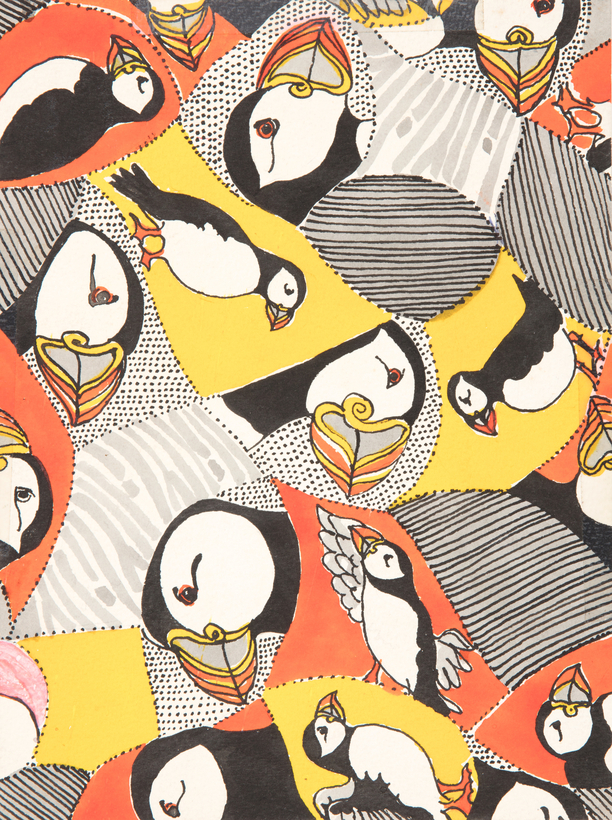Lilly Pulitzer’s serendipitous tumble into fashion is famous. A socialite sets up a juice stand in Palm Beach. Seeking an easy, warm-weather uniform, she decides on A-line shifts in busy prints—the better to hide the juice stains. Soon her customers are clamoring for the dresses instead of the juice. A legend is born. Behind the legend, however, is the lesser known Suzie Zuzek. The artist responsible for 85 percent of those busy prints—used by Pulitzer from 1962 to 1985—Zuzek is now the subject of an exhibition at the Cooper Hewitt.

Agnes Helen “Suzie” Zuzek dePoo, born in 1920 to Yugoslavian immigrants, had a hardscrabble girlhood on a dairy farm in upstate New York. College would not have been on her radar had not a stint in the U.S. Army allowed her to attend New York City’s Pratt Institute on the G.I. Bill. After graduating in 1949, Zuzek landed a job designing textiles for Herman Blanc Studios, married John dePoo, and then, rather reluctantly, moved in 1954 to Key West, where as a housewife and mother she continued working on her designs. Key West Hand Print Fabrics changed ownership in 1961, and she was hired in 1962, right around the time Pulitzer showed up. The firm’s owners were theater people from New York who had a side interest in architecture and design but possessed no textile background whatsoever. Neither did Lilly Pulitzer. The only one who had a clue was Zuzek.
Previously, Pulitzer had been sourcing fabrics from Woolworth’s and the like, but Zuzek’s prints significantly upped Pulitzer’s game. Graceful and whimsical, these color fields of flora and fauna read as a singular visual idiom. Every weekday, Zuzek biked over to Key West Hand Prints, where “the drawings poured out of her,” says Susan Brown, a Cooper Hewitt associate curator and its acting head of textiles, who organized the show. Once a month Pulitzer came down from Palm Beach to select patterns, but the heiress and the single mom (Zuzek had parted ways with her husband) did not collaborate. Zuzek’s vision was her own. There’s a delicious irony in the fact that, as the company’s principal fabric designer, first-generation Zuzek was dressing the nation’s most elite women—Jackie Kennedy, Dina Merrill, Happy Rockefeller. It parallels the stories of immigrants (often Jewish) who, through film and song, created an idealized vision of America as only an outsider could.

Fast-forward a few decades to 2019, when the Cooper Hewitt acquired 10 of Zuzek’s drawings and Brown saw an opportunity to resurrect the reputation of their creator. The archive was sold in Pulitzer’s company’s bankruptcy in 1985, and the new owners of the trademark did not buy back the first 30 years of their design heritage. It is now privately owned by The Original I.P. L.L.C., which is reuniting Zuzek with her design aesthetic. This exhibition is the first to reveal the extent of Zuzek’s contribution to the iconic Pulitzer style, and will feature 35 original watercolor and gouache design drawings alongside finished screen-printed textiles and garments. Even if the pandemic has delayed your plans for an island getaway, these flamboyant patterns—fish wearing crowns, lions strumming guitars, monkeys with martinis—will transport you to the tropics pronto. —Yona Zeldis McDonough


 Discover
Discover